What If? (28 page)
Authors: Randall Munroe

Th
is is probably about the maximum possible altitude for a thrown object.
. . . unless you count the technique by which any five-year-old can beat all these records easily.

Lethal Neutrinos
Q.
How close would you have to be to a supernova to get a lethal dose of neutrino radiation?
—Dr. Donald Spector
A.
Th
e phrase “lethal dose
of neutrino radiation” is a weird one. I had to turn it over in my head a few times after I heard it.
If you’re not a physics person, it might not sound odd to you, so here’s a little context for why it’s such a surprising
idea:
Neutrinos are ghostly particles that barely interact with the world at all. Look at your hand
—
there are about a trillion neutrinos from the Sun passing through it every second.

Okay, you can stop looking at your hand now.
Th
e reason you don’t notice the neutrino flood is that neutrinos mostly ignore ordinary matter. On average, out of that massive flood, only one neutrino will “hit” an atom in your body every few years.
1
In fact, neutrinos are so shadowy that the entire Earth is transparent to them; nearly all of the Sun’s neutrino steam goes
straight through it unaffected. To detect neutrinos, people build giant tanks filled with hundreds of tons of target material in the hopes that they’ll register the impact of a single solar neutrino.
Th
is means that when a particle accelerator (which produces neutrinos) wants to send a neutrino beam to a detector somewhere else in the world, all it has to do is point the beam at the detector
—
even if it’s on the other side of the Earth!
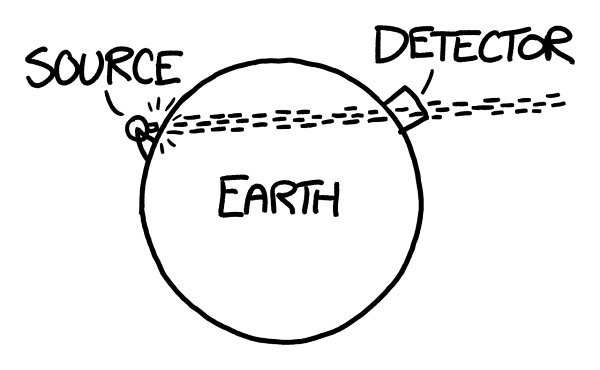
Th
at’s why the phrase “lethal dose of neutrino radiation” sounds weird
—
it mixes scales in an incongruous way. It’s like the idiom “knock me over with a feather” or the phrase “football stadium filled to the brim with ants.”
2
If you have a math background, it’s sort of like seeing the expression “ln(x)
e
”
—
it’s not that, taken literally, it doesn’t make sense
—
it’s that you can’t imagine
a situation where it would apply.
3
Similarly, it’s hard to produce enough neutrinos to get even a single
one
of them to interact with matter; it’s strange to imagine a scenario in which there’d be enough of them to hurt you.
Supernovae provide that scenario.
4
Dr. Spector, the Hobart and William Smith Colleges physicist who asked me this question, told me his rule of thumb for estimating
supernova-related numbers: However big you think supernovae are, they’re bigger than that.
Here’s a question to give you a sense of scale. Which of the following would be brighter, in terms of the amount of energy delivered to your retina:
A supernova, seen from as far away as the Sun is from the Earth, or the detonation of a hydrogen bomb
pressed against your eyeball
?
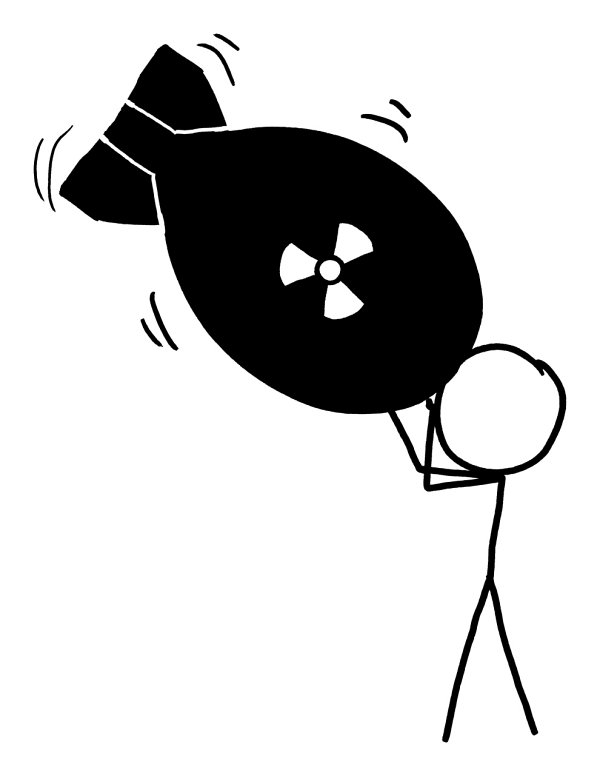
Can you hurry up and set it off?
Th
is is heavy.
Applying Dr. Spector’s rule of thumb suggests that the supernova is brighter. And indeed, it is . . . by
nine orders of magnitude
.
Th
at’s why this is a neat question
—
supernovae are unimaginably huge and neutrinos are unimaginably insubstantial. At what point do these two unimaginable things cancel out to produce an effect
on a human scale?
A paper by radiation expert Andrew Karam provides an answer. It explains that during certain supernovae, the collapse of a stellar core into a neutron star, 10
57
neutrinos can be released (one for every proton in the star that collapses to become a neutron).
Karam calculates that the neutrino radiation dose at a distance of 1 parsec
5
would be around half a nanosievert,
or 1/500
th
the dose from eating a banana.
6
A fatal radiation dose is about 4 sieverts. Using the inverse-square law, we can calculate the radiation dose:

Th
at’s a little more than the distance between the Sun and Mars.
Core-collapse supernovae
happen to giant stars, so if you observed a supernova from that distance, you’d probably be inside the outer layers of the star that created it.
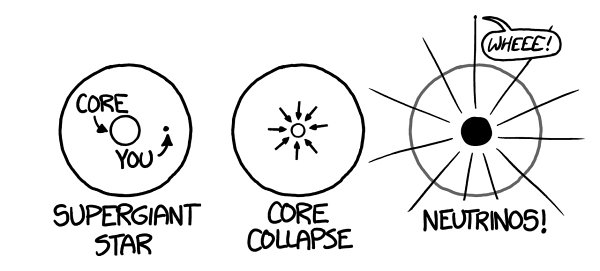
GRB 080319B was the most violent event ever observed
—
especially for the people who were floating right next to it with surfboards.
Th
e idea of neutrino radiation damage reinforces just how big supernovae are. If you observed a supernova from 1 AU away
—
and you somehow avoided being incinerated, vaporized, and converted to some type of exotic plasma
—
even the flood of ghostly
neutrinos would be dense enough to kill you.
If it’s going fast enough, a feather can
absolutely
knock you over.
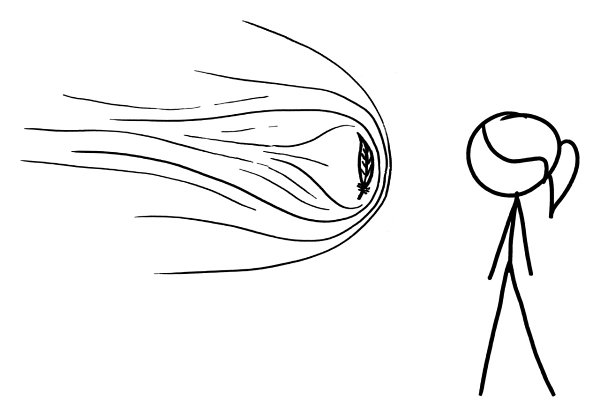
- 1
Less often if you’re a child, since you have fewer atoms to be hit. Statistically, your first neutrino interaction probably happens somewhere around age ten.
- 2
Which would still be less than 1 percent of the ants in the world.
- 3
If you want to be mean to first-year calculus students, you can ask them
to take the derivative of ln(x)
e
dx. It looks like it should be “1” or something, but it’s not.
- 4
“Supernovas” is also fine. “Supernovii” is discouraged.
- 5
3.262 light-years, or a little less than the distance from here to Alpha Centauri.
- 6
“Radiation Dose Chart,”
http://xkcd.com/radiation
.
weird (and worrying) questions from the what if? INBOX, #8

Q.
A toxin blocks the ability of the nephron tubule reabsorption but does not affect filtration. What are the possible short-term effects of this toxin?
—Mary
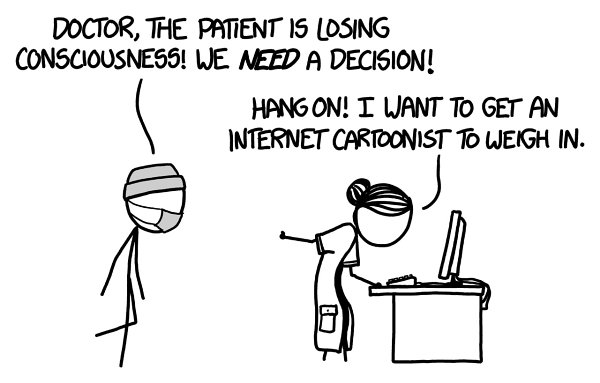
Q.
If a Venus fly trap could eat a person, about how long would it take for the human to be fully de-juiced and absorbed?
—Jonathan Wang

